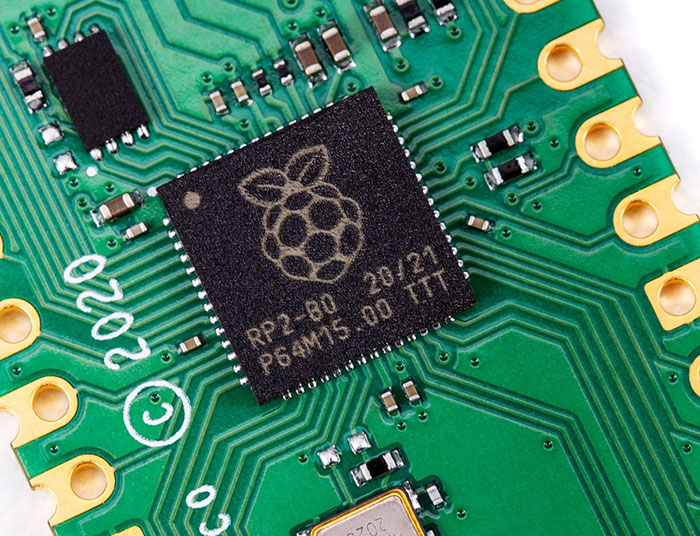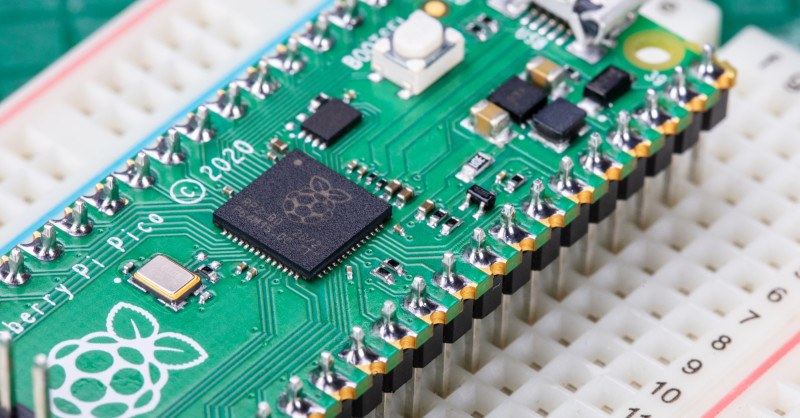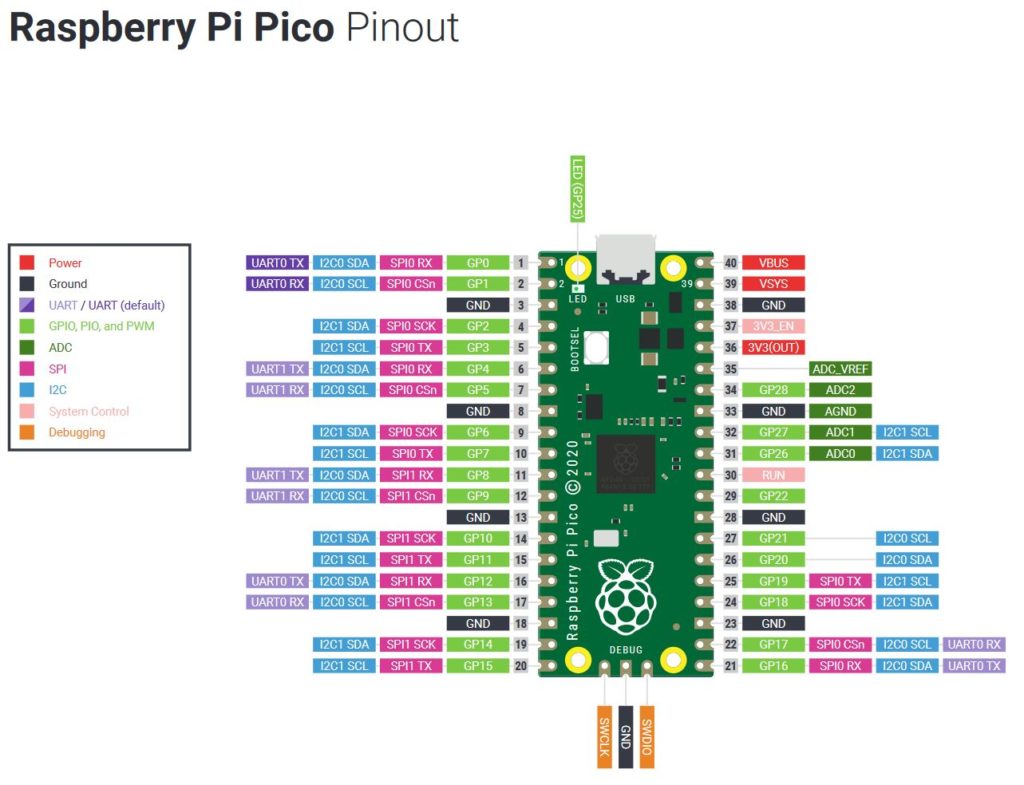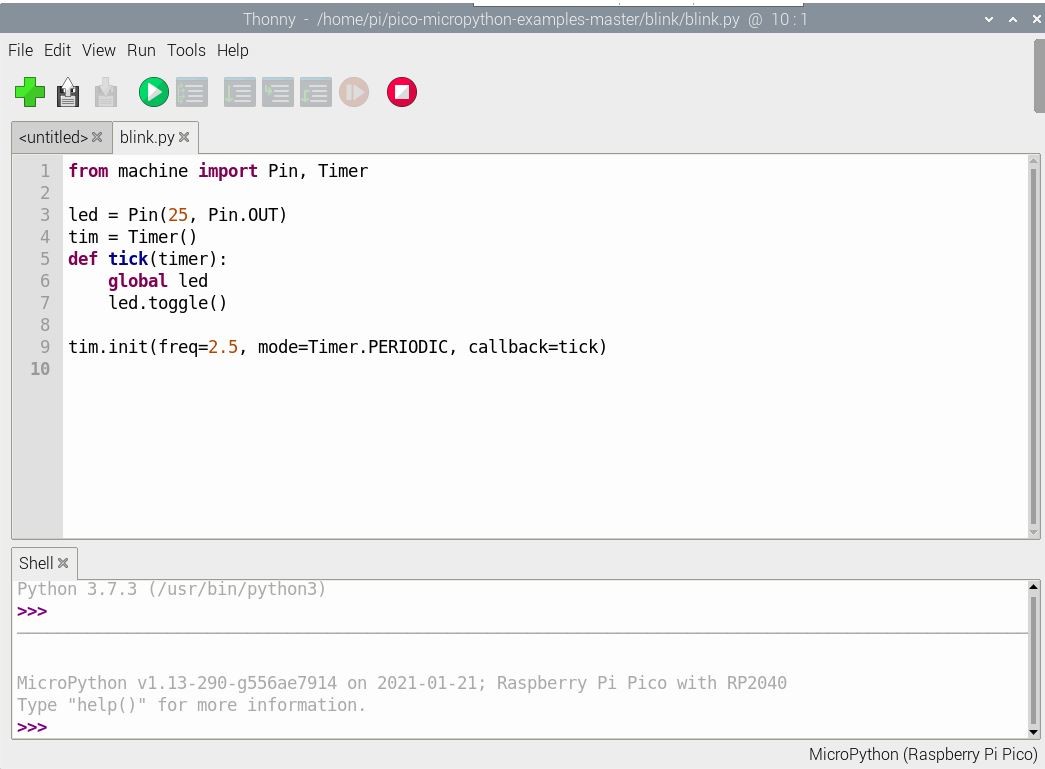
The Raspberry Pi Pico differs from all the previous Raspberry Pi products from the Raspberry Pi Foundation, in that it is a microcontroller board and not a single board Linux computer. It in fact resembles a Arduino board or the many STM32 based boards on the market.
The Raspberry Pi pico is based on a RP2040 microcontroller chip, which was developed by the Raspberry Pi team themselves. The Raspberry Pi Pico just costs $4, but provides ample power for most embedded projects and gives users an easy entry into the world of microcontrollers.Development can take place on any Windows, Linux or Apple computer, in fact even on another Raspberry Pi.
The heart of the Raspberry Pi Pico is the RP2040 System on Chip (SoC) it features a 32-bit dual core Arm Cortex M0+ which runs at 133Mhz, has 256KB of SRAM, it has no internal flash or EEPROM memory, but can support upto 16MB of external flash memory.The Raspberry Pi Pico provides 2MB of flash memory for the RP2040, and support components, including voltage regulator and crystal oscillator.

(RP2040 on the Raspberry Pi Pico)
The Raspberry Pi Pico comes with a number of GPIO castellations on the edge of the board, which enable the board to be soldered directly to a project or carrier board.These PCB connections also allow headers to be directly soldered to the board, allowing easy insertion into a breadboard.

(Breadboard Headers)

The above image shows all the 40 available connections on the Raspberry Pi Pico.
- 26 multi-function GPIO pins at 3.3V
- 8 x Programmable PIO state machine I/O for custom peripheral support
- 16 x PWM channels
- 3 x 12-bit ADC
- 2 x SPI, 2 x I2C, 2 x UART
One feature that sets the Raspbeery Pi Foundations RP2040 from other microcontrollers is a versatile hardware interface known as PIO, "Programmable Input/Output".The PIO is programmable in the same way as the processor and this makes I/O transfers much faster and independant from the processor.
Their are two PIO blocks can thus execute programs to support interfaces like VGA for higher speed data tranfer.Please check our other blog posts coming soon on using these RP2040 PIO's.
Programming the Raspberry Pi Pico
MicroPython is probably the best way to get started with programming the Raspberry Pi Pico. Writing MicroPython code using the Thonny Python IDE is the most easy way to start writing code for the Raspbery Pi Pico and creating your first program on the device.
The Raspberry Pi Pico can also be programmed in C/C++, the Raspberry Pi Foundation provide a wealth of documentation on setting up an development enviroment for coding in C/C++ and full SDK Documentation.

Leave a Comment